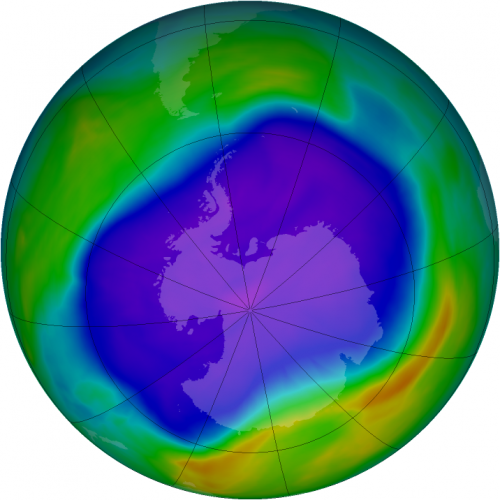Mysterious source of ozone-depleting chemical baffles NASA

A chemical used in dry cleaning and fire extinguishers may have been phased out in recent years but NASA said Wednesday that carbon tetrachloride (CCl4) is still being spewed into the atmosphere from an unknown source.
The world agreed to stop using CC14 as part of the Vienna Convention on Protection of the Ozone Layer and its Montreal Protocol, which attained universal ratification in 2009.
"Parties to the Montreal Protocol reported zero new CCl4 emissions between 2007-2012," the US space agency said in a statement.
"However, the new research shows worldwide emissions of CCl4 average 39 kilotons per year, approximately 30 percent of peak emissions prior to the international treaty going into effect."
CC14 levels are not enough to reverse the decreasing trend of ozone-depletion, but experts are still mystified as to where it is coming from.
With no new reported emissions, atmospheric concentrations of the compound should have declined at an expected rate of four percent per year since 2007.
However, observations from the ground showed atmospheric concentrations were only declining one percent per year.
"We are not supposed to be seeing this at all," said Qing Liang, an atmospheric scientist at NASA's Goddard Space Flight Center in Greenbelt, Maryland.
"It is now apparent there are either unidentified industrial leakages, large emissions from contaminated sites, or unknown CCl4 sources."
Researchers used NASA's 3-D GEOS Chemistry Climate Model and data from global networks of ground-based observations to establish the first estimate of average global CC14 emissions from 2000 to 2012.
In going through the data, researchers also learned that the chemical stays in the atmosphere were 40 percent longer than previously thought.
"People believe the emissions of ozone-depleting substances have stopped because of the Montreal Protocol," said Paul Newman, chief scientist for atmospheres at NASA.
"Unfortunately, there is still a major source of CCl4 out in the world."
The study was published in the journal Geophysical Research Letters.
Journal information: Geophysical Research Letters
© 2014 AFP




















